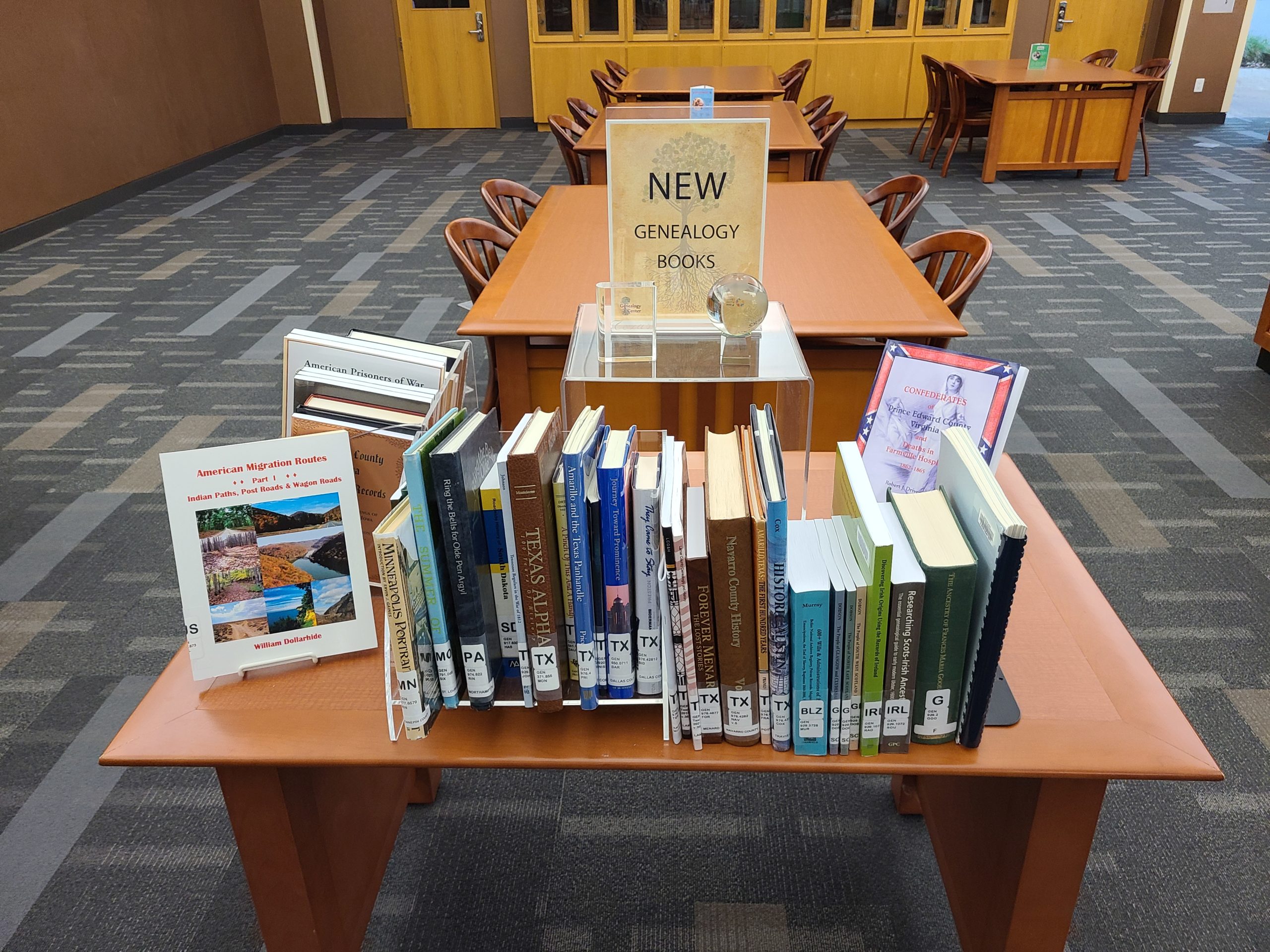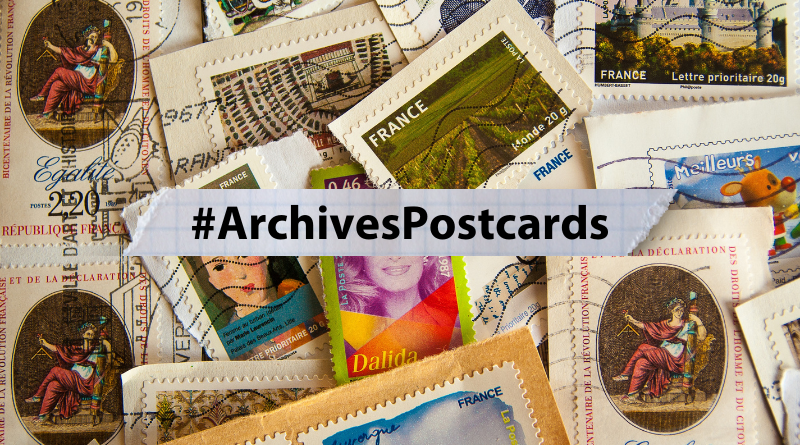
#ArchivesPostcards
Postcards have been a quick, easy, and fun way to communicate with loved ones since the creation of the post office. Adorned with eye-catching images, postcards have been used to capture the people, places, and events of everyday life. Let’s explore some of Plano’s very own #ArchivesPostcard collection and the places they show!
Clark Stadium
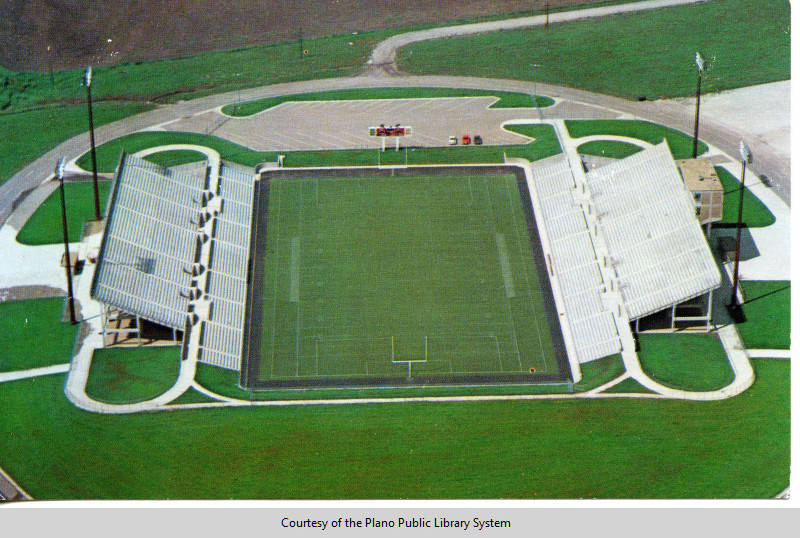
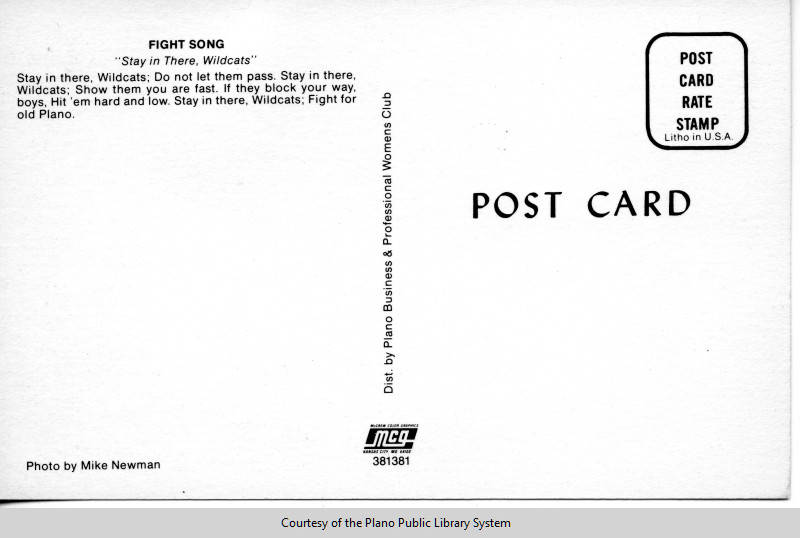
This postcard shows Clark Stadium, the home stadium of the Plano Senior High School Wildcats and the Plano West Senior High School Wolves. Built in 1977 for a cost of $2.75 million, it was named after Coach John Clark who coached the Plano Wildcat varsity football team to two state championships, nine district championships, and served as Plano ISD Athletic Director for 17 years.
Football is a tradition that dates back almost at far as the city itself. The first unofficial Plano football team was created in 1898 and the first official high school team just two years later in 1900. The athletics program continued to flourish until World War I when all athletics were cancelled due to not enough men left at home to field teams. Athletics in Plano were reestablished by 1925 and the Wildcat was chosen as the mascot. The fight song displayed on the back of the postcard is still the Plano Senior High School fight song today.
Haggard Park
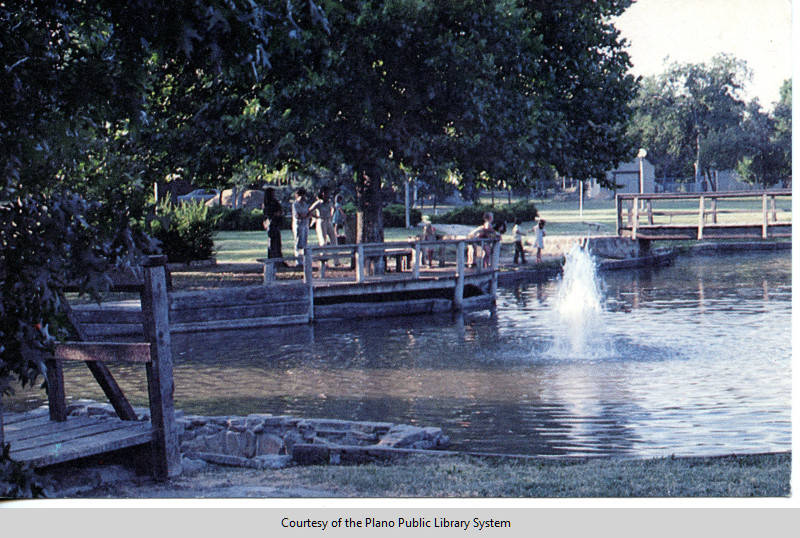
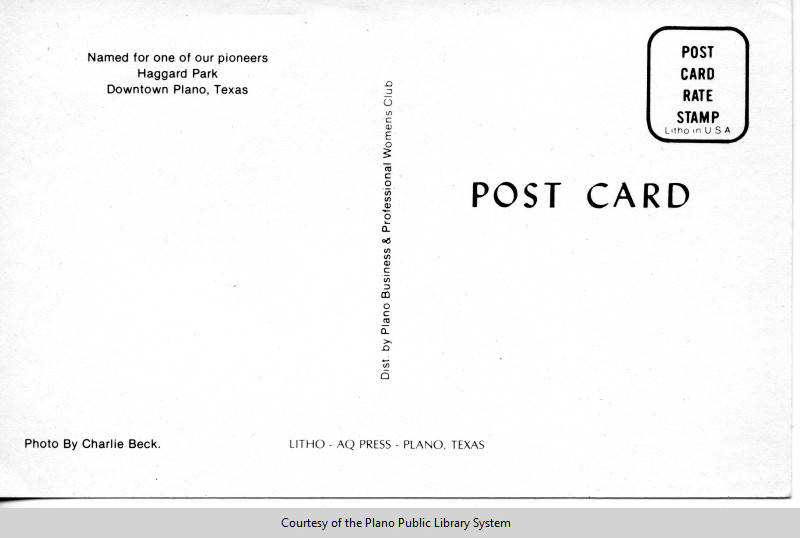
Haggard Park is one of the key features of downtown Plano. The five-and-a-half-acre park was created in the early 1920s by the Lions Club through donations of land from the Haggard and Saigling families, two of the first families to settle in Plano. The area contained several homes and a lumber mill until it was revitalized to be a community gathering place, featuring a gazebo and fountain.
The park is surrounded by other historic landmarks such as the Interurban Railway Museum and trolley and the Cox Building, which was the original Plano High School building. In 2012, Haggard Park was honored as a Lone Star Legacy Park by the Texas Recreation and Park Society. A Lone Star Legacy Park must be at least 50 years old and hold special prominence in the local community and state. This postcard shows Haggard Park sometime in the 1970s. Today, the park now also includes a playground, public art and paved trails.
Scene of Plano, Texas (East) / Scene of Plano, Texas (West)
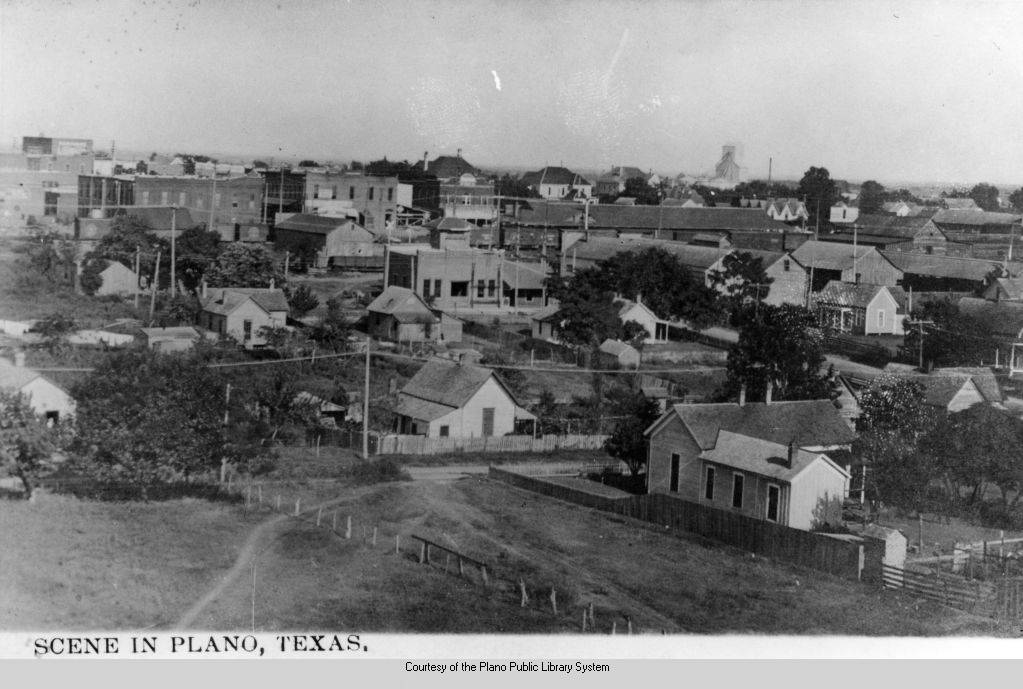

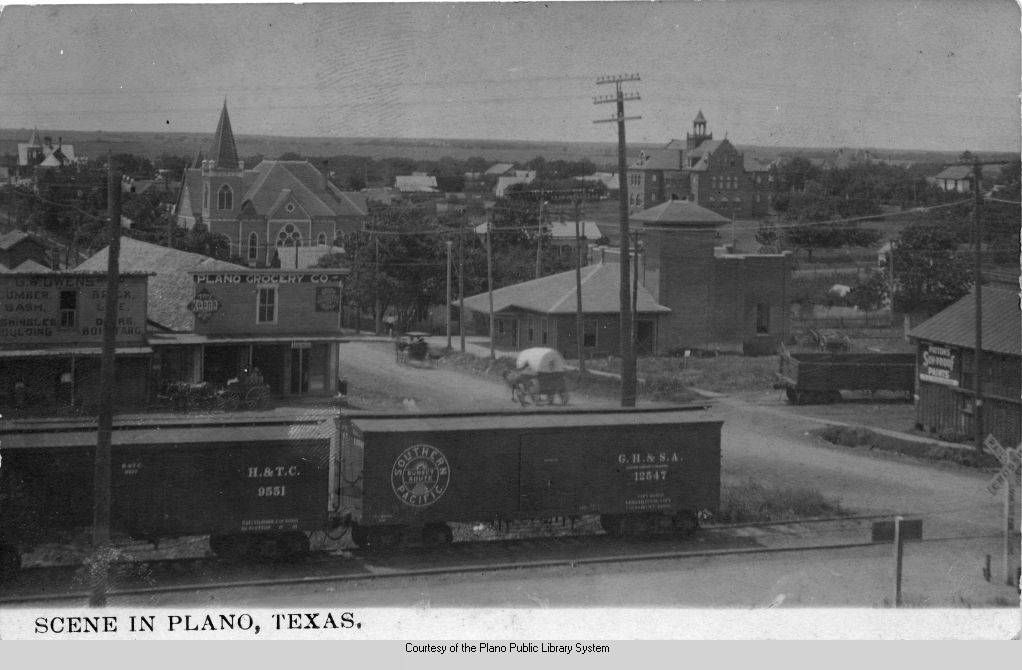
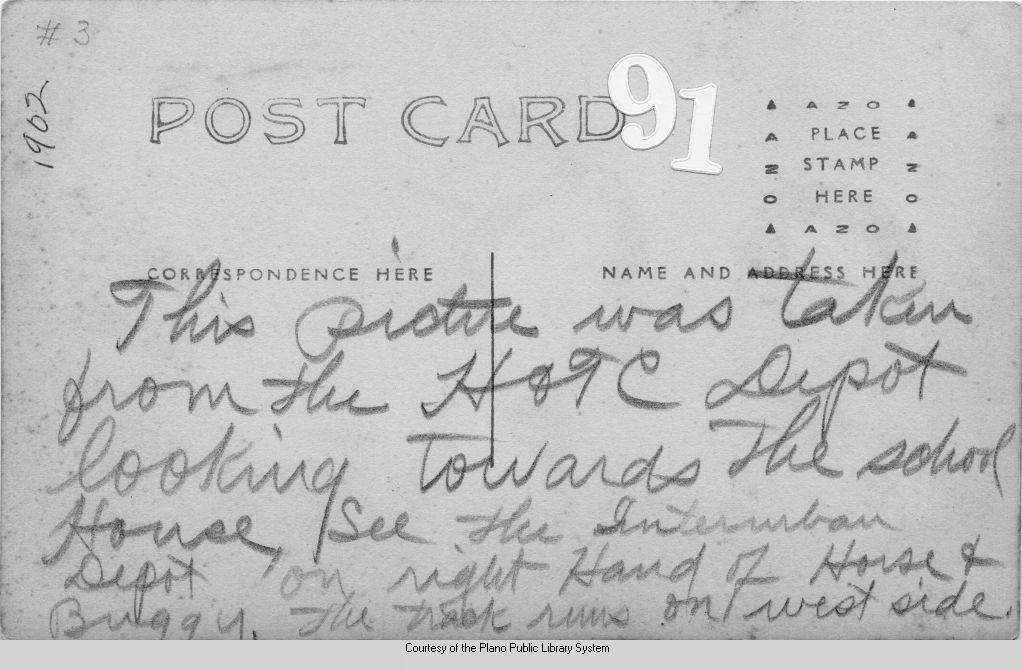
These postcards show two Plano scenes photographed from opposite directions sometime after 1908. Both cards feature the Interurban Railroad station near the center of each image, but from different sides. Plano’s council passed an ordinance in February 1907 granting the Texas Traction Company rights to construct and operate an electric railway through the city. The line was part of a larger network called the Dallas-Sherman Interurban Railway. This electric railway line was completed on July 1, 1908, and ran parallel to the Houston & Texas Central Railroad.
The Scene of Plano, Texas (West) postcard features a different city view with many notable businesses and social landmarks present such as Plano Grocery Company, First Christian Church, Plano Public School, and G.W. Owens Lumber along with various railroad cars for Houston & Texas Central.
Check out past #ArchivesHashtagParty posts here on the blog.



